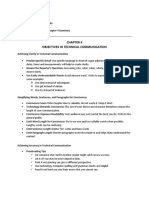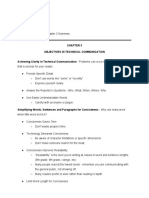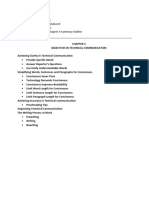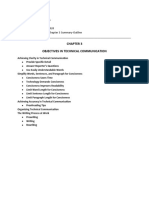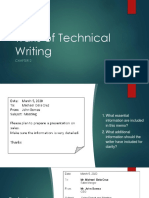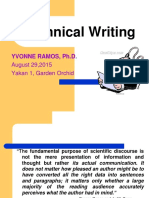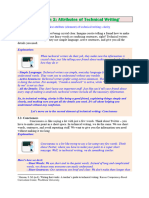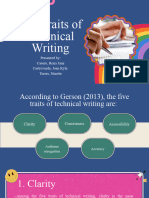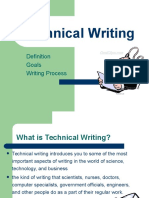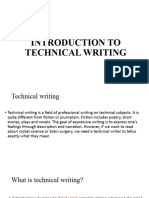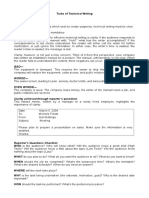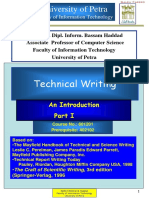0% found this document useful (0 votes)
88 views2 pagesChapter 4 Summary
The document is an email from TroiEllis Reichlin to Nancy Myers summarizing Chapter 4 of APLED 121 on objectives in technical communication. The chapter discusses achieving clarity through providing specific details, answering basic questions, and using simple words. It also covers simplifying writing for conciseness by keeping it short to respect people's time, using technology, and limiting word, sentence, and paragraph length. The chapter addresses achieving accuracy through proofreading tips and organizing technical communication using various structures. It concludes with an overview of the writing process.
Uploaded by
api-610017694Copyright
© © All Rights Reserved
We take content rights seriously. If you suspect this is your content, claim it here.
Available Formats
Download as PDF, TXT or read online on Scribd
0% found this document useful (0 votes)
88 views2 pagesChapter 4 Summary
The document is an email from TroiEllis Reichlin to Nancy Myers summarizing Chapter 4 of APLED 121 on objectives in technical communication. The chapter discusses achieving clarity through providing specific details, answering basic questions, and using simple words. It also covers simplifying writing for conciseness by keeping it short to respect people's time, using technology, and limiting word, sentence, and paragraph length. The chapter addresses achieving accuracy through proofreading tips and organizing technical communication using various structures. It concludes with an overview of the writing process.
Uploaded by
api-610017694Copyright
© © All Rights Reserved
We take content rights seriously. If you suspect this is your content, claim it here.
Available Formats
Download as PDF, TXT or read online on Scribd
/ 2



